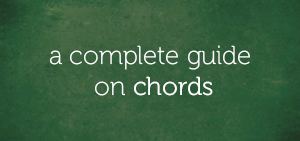I’ll be showing you (step-by-step) how to practice scales over the 2-5-1 chord progression.
As an intermediate jazz player, you’re expected to be properly acquainted with traditional scales and modal scales and how they can be played starting from any note on the keyboard.
You’re also expected to know the compatible scales that are specific for every chord (usually played on the left hand).
But in this lesson, I’ll be taking you beyond the knowledge of scales and scale-chord compatibility to showing you the proper way to practice these scales over the 2-5-1 chord progression.
Before we do so, let’s refresh our minds on the 2-5-1 chord progression.
Quick Insights On The 2-5-1 Chord Progression
In every major key, there are seven unique scale tones. The key of C major (as a reference):
…has these seven scale tones and each of these scale tones can be represented or notated using the number system.
“Check It Out…”
In the key of C major:
C is the 1
D is the 2
E is the 3
F is the 4
G is the 5
A is the 6
B is the 7
In the number system, scale tone chords associated with every tone of the scale have their corresponding number. For example, the C major chord:
…is considered as the 1-chord and that’s because C:
…which is the first tone of the C major scale is associated with the “number 1” in the number system.
“So, What’s The 2-5-1 Chord Progression?”
The movement from one scale tone chord to another creates chord progressions.
Chord progressions can be represented using the number system. The 2-5-1 chord progression is a movement between the chords of the 2nd, 5th, and 1st tones of major scale.
So, the movement from the 2-chord to the 5-chord, then the 1-chord produces the 2-5-1 chord progression (either) in the major (or minor) key.
“Let’s Play The 2-5-1 Chord Progression Using Seventh Chords…”
Attention: All the examples that will be given are in the key of C major.
The 2-chord is the D minor seventh chord:
…the 5-chord is the G dominant seventh chord:
…while the 1-chord is the C major seventh chord:
Now that we’ve refreshed our minds on the 2-5-1 chord progression, let’s go ahead and learn how to practice scales over it.
How To Practice Scales Over The 2-5-1 Chord Progression
Before we talk about how scales can be practiced, let’s look at the three underlying modal scales for the 2-5-1 chord progression.
Attention: Keep in mind that all the examples are in the key of C.
The scale for the 2-chord:
…is the Dorian scale:
The scale for the 5-chord:
…is the Mixolydian scale:
The scale for the 1-chord:
…is the Lydian scale:
Final Words
It’s important to start scales on the 1st, 3rd, 5th, and 7th tones — which are basically chord tones.
We’ll look at how the use of guide-tones can help you take advantage of the playing of scales from chord tones.
Thank you for your time invested in reading this blog and questions, suggestions, and comments are welcome and you can drop them in the comment section below.
See you in the next lesson.
Chuku Onyemachi
Latest posts by Chuku Onyemachi (see all)
- The Formation Of Diminished Seventh Chords Used To Be Challenging Until I Did This
- How To Form Seventh Chords In Two Shakes Of A Dog’s Tail Using Third Intervals And The Circle Of Fifths Chart
- I Played The 13sus4 Chord And This Happened…
- How To Build Seventh Chords Like An Architect Using “Foundation And Structure” Concept
- This 4-Week Plan Will Help You Master All The Major Scales







Comments on this entry are closed.